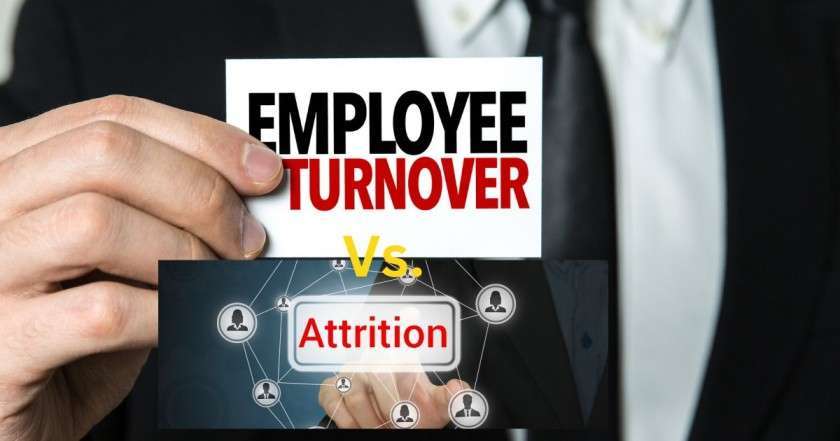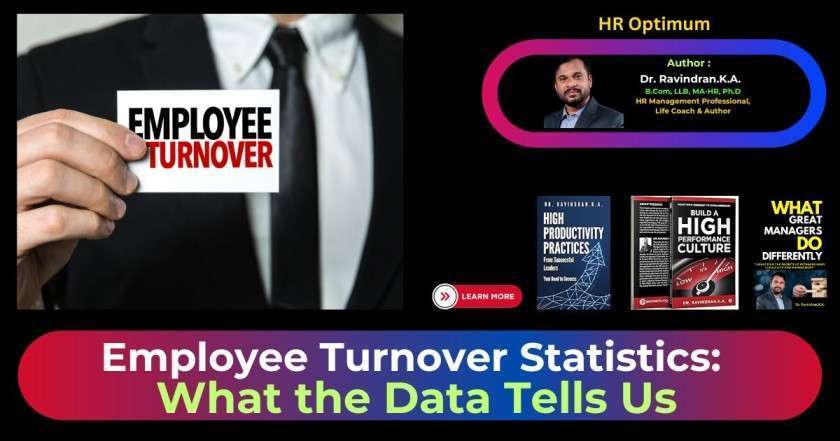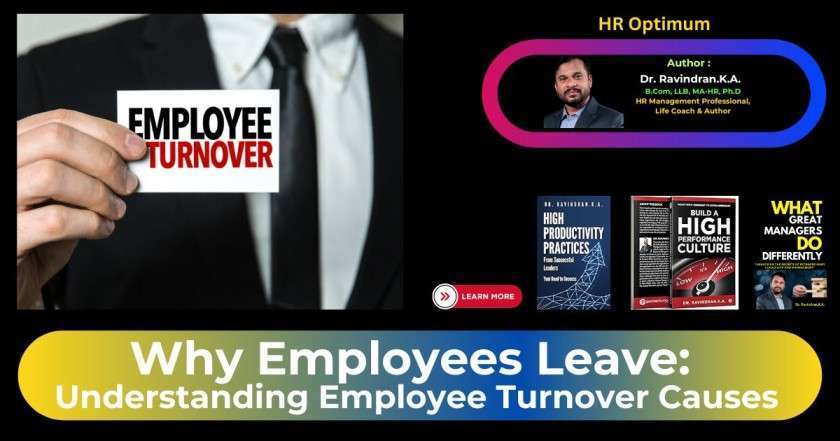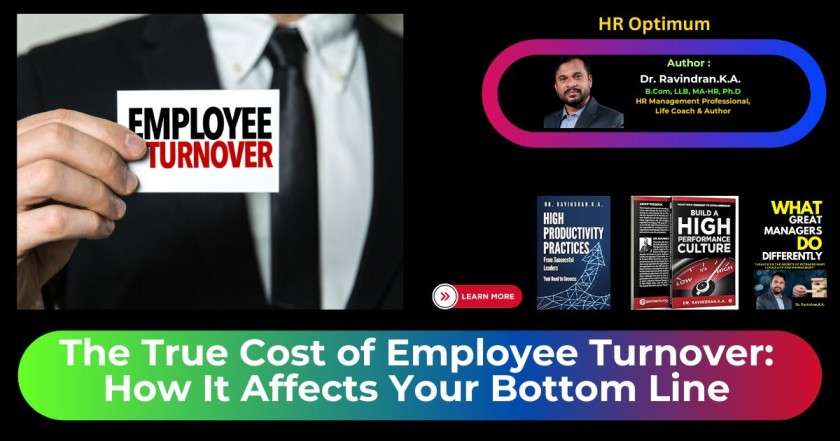“Employee Attrition vs. Employee Turnover: Key Differences and Management Strategies”
Today’s job market moves fast, making it key for companies to know the difference between employee attrition and turnover. Last year, the U.S. saw 48 million job changes, making it more important to understand and handle these HR challenges. But, what’s the difference between these terms, and how can companies use this info to keep their top workers happy?
Thank you for reading this post, don't forget to subscribe!Key Takeaways
- Employee turnover and attrition are distinct HR metrics that provide valuable insights into workforce retention and organizational health.
- Tracking turnover and attrition rates can help identify underlying issues, enabling companies to implement targeted strategies to enhance employee engagement and satisfaction.
- Effective onboarding, competitive compensation, and a positive workplace culture are crucial in reducing both turnover and attrition.
- Leveraging people analytics and engagement surveys can provide actionable insights to proactively address potential retention challenges.
- Managing turnover and attrition is not only crucial for financial sustainability but also essential for fostering a diverse, equitable, and inclusive workforce.
Introduction
In the business world, keeping an eye on employee turnover and employee attrition is crucial. These terms might seem similar, but they actually mean different things. They’re important for companies who want to keep their teams stable and productive. By knowing the differences and keeping track of these metrics, making the right decisions and effective employee retention strategies are possible.
Overview of Employee Attrition and Turnover
Employee turnover is the rate at which workers leave a job, whether they choose to leave or are asked to. This includes those who quit, get fired, or retire. On the flip side, employee attrition focuses on how the workforce naturally decreases over time. This can happen through retirement, death, or when people decide to leave on their own.
Importance of Monitoring These Metrics
Keeping a close watch on these rates helps companies know their employees’ mood and make smart choices. It gives clues on how happy employees are, the success of hiring efforts, and about the corporate culture. By using these HR numbers, businesses can find and fix issues, aiming for a more steady and motivated team.
Companies can boost their profits by almost 82% over three years if they use “people analytics.” This shows how crucial it is to watch employee turnover and employee attrition. They have a big effect on how well a business does and its financial health.
“High employee turnover and attrition can increase costs, create knowledge gaps, and negatively impact employee morale and the organization’s overall performance.”
What is Employee Turnover?
Employee turnover happens when people leave their jobs for different reasons. This can be because they want to, or the company asks them to. It’s a count of how many employees leave in a certain time, usually a year. Companies look at turnover in different ways, like by department or type of worker.
Definition and Key Aspects of Employee Turnover
If a company has a lot of employee turnover, it might mean there are problems. Workers could be unhappy, the bosses might not be good, or they see no chance to grow. Lots of things can make employees want to leave, from bad pay to a stressful job.
Causes of High Employee Turnover
A study found that many leave because they aren’t paid enough. But, other things like too much work, not enough chances to grow, or bad bosses also play a big part. When a job feels toxic, people want to leave.
| Industry | Average Turnover Rate |
|---|---|
| Professional Services | 13.4% |
| Tech | 12.9% |
| Entertainment | 11.8% |
| Hospitality | 11.8% |
| Retail | 11.4% |
The average employee turnover rate for most jobs is 10.6%. Some fields, like professional services, see more departures at 13.4%. Tech and hospitality are also high, at 12.9% and 11.8%.
“Poor management can be the root cause of 75 percent of voluntary turnover.”
Knowing and keeping an eye on turnover rates helps companies. It lets them keep good workers happy and spot trouble early. Voluntary turnover is when people choose to leave, while involuntary is when they’re asked to go.
Fixing the reasons behind high employee turnover means looking at pay, chances for growth, and the work environment. By doing this, companies can keep their best people and have a happy, hardworking team.

What is Employee Attrition?
Employee attrition is a key HR metric. It shows the slow decrease in the size of a company’s team. It happens when people leave the company, but the positions aren’t filled right away.
Definition and Key Aspects of Employee Attrition
Employee attrition definition: It means the number of staff goes down naturally. This happens when people resign, retire, or get fired, but their roles stay empty. Slowly, this makes the staff size smaller.
Voluntary attrition is when staff members decide to leave. This can be for better jobs, moving to a new place, retiring, or any other personal choice. Involuntary attrition is different. It means the company had to let them go, like in a layoff or firing for not performing well.
Keeping the attrition rate under 10% shows the company is stable. But if many people leave quickly, it’s a problem. It means the company may lose important knowledge and people might not be happy. For instance, Amazon lost a lot of money in a year because too many people were leaving.
“Employee attrition is a gradual and natural reduction in the size of a company’s workforce, occurring through voluntary departures or involuntary layoffs, without immediate replacement of those positions.”
Unlike turnover, where workers are replaced, attrition is about losing people with no quick replacements. This can make the team slowly get smaller over time.
Key Differences Between Employee Turnover and Attrition
Employee turnover and employee attrition sound similar, but they point to different things in a company’s workforce. It’s important for businesses to grasp the differences between turnover and attrition. This helps them create better talent management plans and smart decisions about workforce analytics.
The main contrast is what happens when someone leaves. In cases of employee turnover, the company fills the empty spot quickly. This can show problems like unhappy employees or weak management. Turnover is seen as a negative thing because it costs money to find, hire, and train new people. It also disrupts work and lowers productivity.
But with employee attrition, the departures happen slowly and naturally. Here, the company might not rush to replace the person or might not replace them at all. Attrition isn’t always bad. It can cut down on costs for recruitment and training. It also lets a company plan for the future by looking at the bigger picture over time.
| Employee Turnover | Employee Attrition |
|---|---|
| Backfilling of departing positions | Positions not immediately replaced |
| Indicates underlying organizational issues | Gradual, natural reduction in workforce |
| Higher costs (recruitment, hiring, training) | Potential cost savings (recruitment, training) |
| Disrupts workflow and productivity | Allows for long-term succession planning |
Being clear about the difference between employee turnover vs. attrition is vital. It helps companies craft strong workforce churn management strategies. With this understanding, they can make choices that will help their business thrive over the long run.
“Organizations that leverage ‘people analytics’ to optimize business and management decisions have achieved a three-year average profit 82% higher than other companies.”
– Deloitte
Calculating Employee Turnover Rate
It’s key for organizations to know their employee turnover. This helps them understand their workforce and make smart choices about talent. The turnover rate shows the speed at which people are leaving jobs within a set time.
The rate is usually a percentage. You find it by dividing how many people left by the average number on staff. Let’s say a company of 100 sees 10 people leave in a year. Their turnover rate is 10%.
Keeping an eye on these figures is very beneficial for businesses. It shows them if there are any trends, why people leave, and lets them make plans to keep more staff. By doing this, they get a better look at their staff data and plans for talent.
| Industry | Voluntary Turnover Rate |
|---|---|
| Hospitality | 17.8% |
| Healthcare | 14.2% |
| Insurance | 8.8% |
| Utilities | 6.1% |
The table gives insight into how different industries see people leaving jobs on their own (voluntarily). It helps set a standard for understanding turnover in general. It’s good to remember that each industry’s turnover is shaped by its unique mix of job market, culture, and pay.
Analysing turnover helps organizations design better talent plans. This can boost how long employees stay and make the team more interested and effective.
“Tracking turnover metrics can help companies make more informed and proactive decisions about ways to change and improve retention and ultimately reduce employee churn.”
Calculating Employee Attrition Rate
Employee attrition rate is key for businesses to understand their workforce. It shows the percentage of employees who left or were removed from a company without being replaced. By figuring out this rate, organizations learn a lot about talent management, analytics, and planning for the future.
Formula and Example Calculations
Here’s how you calculate the employee attrition rate:
Attrition Rate = (Number of Churned Employees / Average Number of Employees) x 100
For instance, let’s say in one year, 25 employees left a company, and they usually have 2,000 staff. The attrition rate would be:
Attrition Rate = (25 / 2000) x 100 = 1.25%
So, the company’s attrition rate for that year was 1.25%. Watching this rate helps spot issues like too many people leaving on their own, or challenges in keeping certain groups. Then they can make plans to improve the situation.
There are four main types of employee turnover: voluntary, involuntary, internal, and due to specific demographics. Things like not enough pay, few chances to grow, bad work-life balance, and a negative culture can lead to more people leaving. Knowing why employees leave enables organizations to come up with better ways to keep their best workers and have a happier team.
Employee Turnover
Companies need to pay attention to how many employees leave. This helps them deal with the problem better. A high number of people leaving can cost a lot and make work harder for those who stay. It can also make people feel down. And, the company might lose some of the things it has learned over the years.
Importance of Tracking Employee Turnover
Looking at why people leave can make the workplace better. When companies work to keep workers happy, things go smoothly. How many people leave tells a story. It shows if workers are happy and if the company is doing a good job at keeping them.
Knowing why people leave can lead to fixing the real issues. This can help the company be a better place to work. It also makes hiring and keeping good employees easier.
Benefits of Reducing Employee Turnover
- Reduced recruitment and onboarding costs
- Improved productivity and knowledge retention
- Enhanced employee morale and work culture
- Increased customer satisfaction and loyalty
- Better ability to attract and retain top talent
Looking at turnover helps companies become better. They can find new ways to keep their employees happy. A happy workplace is a place where people stay and work well. This is good for the company in the long run.
Strategies to Reduce Attrition and Turnover
Keeping the best employees is key for any organization. Companies can work on several strategies to reduce people leaving. This includes better hiring and onboarding, good pay and benefits, showing employees they’re valued, offering chances to grow in their career, and creating a great work culture.
Effective Hiring and Onboarding Practices
How you bring new hires in makes a big difference. By using strong onboarding best practices, you can make sure new team members feel ready, valued, and know what’s expected. It’s about giving them the right training, meeting new colleagues, and fitting into the company’s way of doing things.
Competitive Compensation and Benefits
Giving good pay and benefits is a must to get and keep the best employees. It’s important to regularly check if your salaries and perks meet industry standards. Also, offering solid health plans and retirement options shows your commitment to your team’s well-being.
Employee Recognition and Appreciation
Recognizing and appreciating your team’s efforts makes a big difference. It keeps employees engaged and feeling valued. This can be simple things like saying a public thanks, giving bonuses, or offering more chances to grow professionally.
Career Development and Growth Opportunities
Employees want to grow in their roles. By giving them chances for training, mentorship, and moving into new jobs, you keep them interested and involved. This not only makes employees happier but also helps you manage and retain talent better.
Fostering a Positive Organizational Culture
A workplace that feels positive and supportive is key to keeping people. It’s about more than just the work; encouraging a healthy balance, clear communication, and teamwork matters. Support for well-being and building a community within your team can make the work more meaningful and reduce staff turnover.
“Happy employees are on average 12% more productive than unhappy employees.”
By focusing on strategies to keep your team happy and engaged, companies can ensure they’re stable, productive, and competitive in the long run.
Conclusion
Employee turnover and attrition are key HR numbers. They show how strong and stable a workforce is. Differentiating between the two and tackling them head-on can boost retention. This means less cost, and a happier, more productive staff.
It is important to keep an eye on turnover and attrition. This data helps in making smart choices and giving focused help. This creates a team that sticks with the company and aims for its success. Skillful hiring and welcoming new staff, good pay and perks, valuing and advancing careers, plus a positive company vibe are all ways to lessen people leaving.
Companies must focus on keeping their talent. This means being serious about making employees stay. This effort is key for a reliable, skilled, and dedicated team. By caring a lot about these HR numbers and fixing issues early, companies set themselves up for a future that’s bright and successful.
FAQ
What are employee turnover and attrition?
Employee turnover shows how many people leave a company. They might choose to leave or be asked to (involuntary). This count covers a one-year period. Attrition is a measure of how many employees leave in total during the same time.
Why is it important for companies to monitor these metrics?
By tracking these figures, companies can spot and fix problems. These might be dissatisfaction, bad management, no growth chances, or a harmful workspace. Addressing these issues can make staff want to stay. It helps lower costs and keeps the company running smoothly.
What is the difference between employee turnover and attrition?
The main difference between turnover and attrition is in the response of the employer. With turnover, they’d fill the vacant spot. If it’s attrition, they might not replace the position for a while or at all. Attrition usually happens more slowly and is seen as a natural decrease in staff numbers.
How do you calculate employee turnover and attrition rates?
To find turnover, divide the number of departures by the average employee count, then multiply by 100. To work out attrition, do the same with the number of those who left or were not replaced against the employee average in a specific time frame, times 100.
What are the benefits of reducing employee turnover?
Lowering turnover can lead to a more stable workforce and better productivity. It also makes for a happier work setting. This is because replacing employees is costly and can disrupt work. Low morale and a loss of knowledge might occur with high turnover.
What strategies can companies implement to reduce attrition and turnover?
Companies can decrease attrition and turnover by improving how they hire and onboard. They should offer attractive pay and benefits. Recognition and career development are crucial. A positive culture, with a balance between work and life, and teamwork is important too.
 hroptimum
hroptimum




